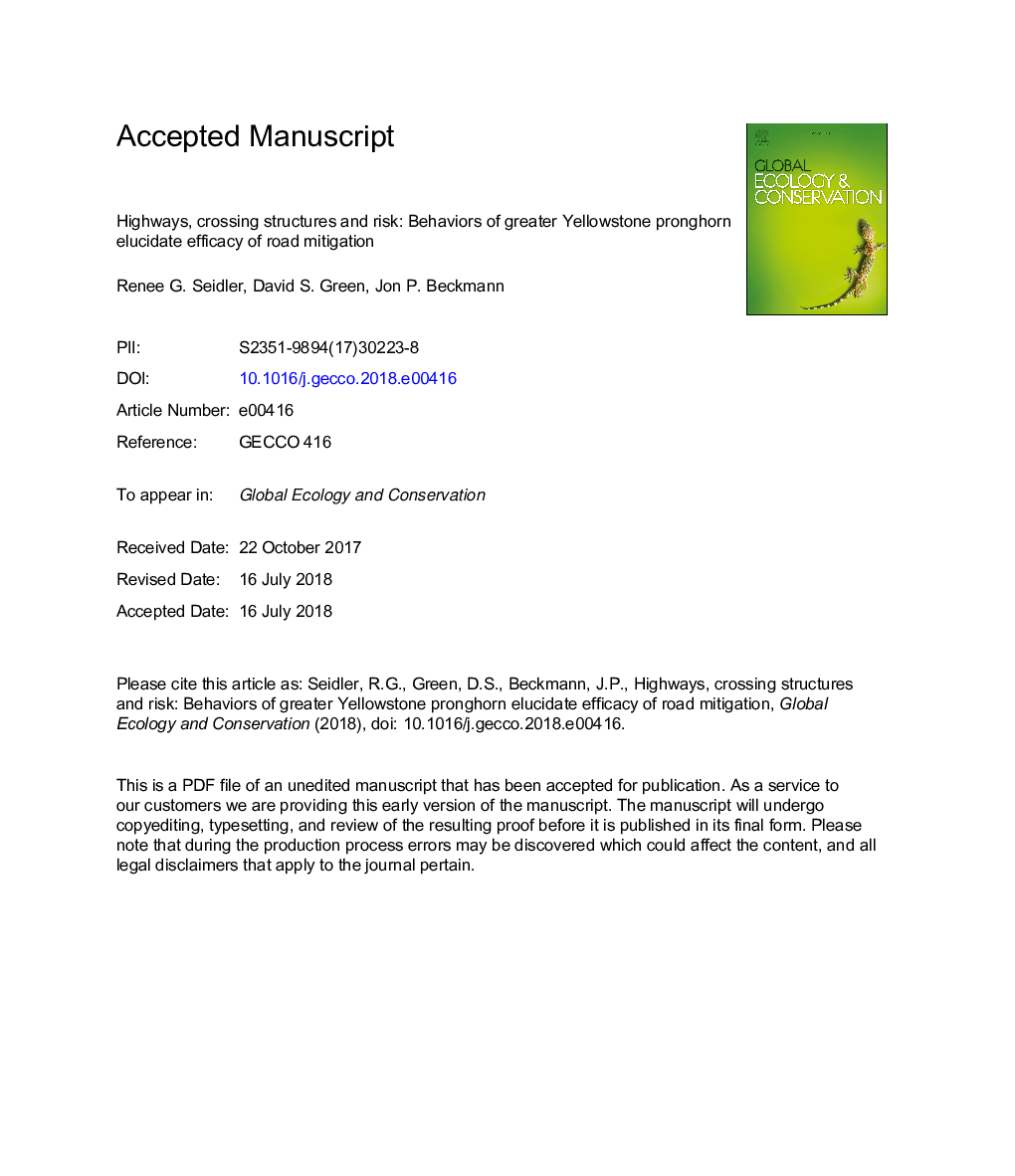| کد مقاله | کد نشریه | سال انتشار | مقاله انگلیسی | نسخه تمام متن |
|---|---|---|---|---|
| 10110089 | 1617652 | 2018 | 34 صفحه PDF | دانلود رایگان |
عنوان انگلیسی مقاله ISI
Highways, crossing structures and risk: Behaviors of Greater Yellowstone pronghorn elucidate efficacy of road mitigation
ترجمه فارسی عنوان
بزرگراه ها، ساختارهای عبور و خطر: رفتارهای بزرگ یول استون پرنژورن اثربخشی کاهش جاده ها
دانلود مقاله + سفارش ترجمه
دانلود مقاله ISI انگلیسی
رایگان برای ایرانیان
موضوعات مرتبط
علوم زیستی و بیوفناوری
علوم کشاورزی و بیولوژیک
بوم شناسی، تکامل، رفتار و سامانه شناسی
چکیده انگلیسی
Wildlife crossing structures and accompanying barrier fencing can prevent large mammals from accessing road surfaces and can significantly reduce wildlife-vehicle collisions while allowing animals to move from one side of the road to the other. Little research has been conducted on the behavioral responses of wildlife when encountering these novel structures over time. We used the installation of new wildlife road crossing structures built along a 6000-year old migration route to evaluate behavioral responses of long-distance migrators to the structures. We collected behavioral data during and after construction in order to evaluate individuals' immediate responses to these structures and to investigate how they changed over time using generalized linear mixed-effects models and generalized additive models fit by maximum likelihood. Pronghorn acclimated to the crossing structures and the frequency in which they successfully crossed them increased over time. The probability of pronghorn successfully crossing a structure was not influenced by human presence. Pronghorn spent more time in sustained vigilance behaviors after construction. Pronghorn also spent more time in sustained vigilance behaviors at relatively further distances from a structure and lead individuals spent more time in sustained vigilance behaviors than non-lead individuals. We did not detect any significant factors associated with stress behaviors. Pronghorn still demonstrated high sustained vigilance when approaching the structures after 20 months post construction, despite an increase in crossing success. While we found evidence of risk-avoidance behaviors in pronghorn at crossing structures, this work provides evidence that pronghorn gradually acclimated to wildlife crossing structures built in a historical migration corridor in the Greater Yellowstone Ecosystem. We recommend using task completion chronology (rather than project completion dates) to install wildlife mitigation and we recommend using wildlife friendly fencing when fences are required for multiple use (e.g., cattle) at crossing structure entrances.
ناشر
Database: Elsevier - ScienceDirect (ساینس دایرکت)
Journal: Global Ecology and Conservation - Volume 15, July 2018, e00416
Journal: Global Ecology and Conservation - Volume 15, July 2018, e00416
نویسندگان
Renee G. Seidler, David S. Green, Jon P. Beckmann,
